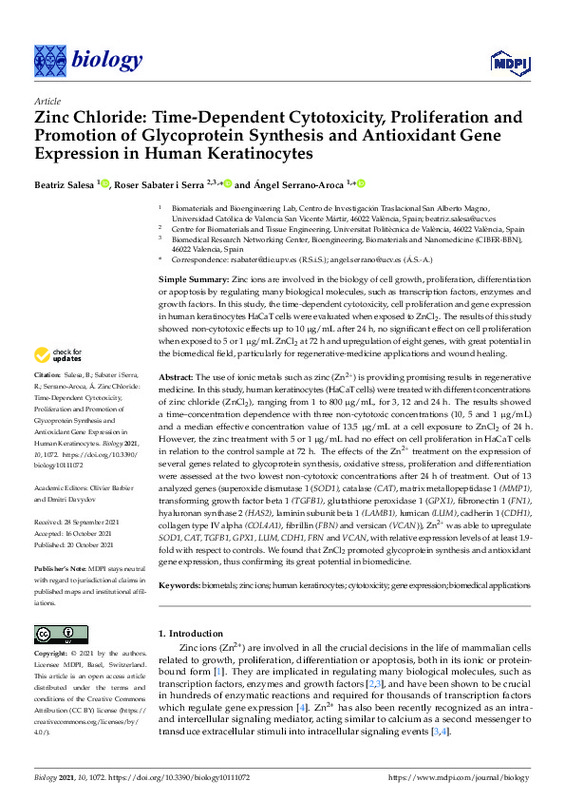JavaScript is disabled for your browser. Some features of this site may not work without it.
Buscar en RiuNet
Listar
Mi cuenta
Estadísticas
Ayuda RiuNet
Admin. UPV
Zinc Chloride: Time-Dependent Cytotoxicity, Proliferation and Promotion of Glycoprotein Synthesis and Antioxidant Gene Expression in Human Keratinocytes
Mostrar el registro completo del ítem
Salesa, B.; Sabater I Serra, R.; Serrano-Aroca, Á. (2021). Zinc Chloride: Time-Dependent Cytotoxicity, Proliferation and Promotion of Glycoprotein Synthesis and Antioxidant Gene Expression in Human Keratinocytes. Biology. 10(11):1-13. https://doi.org/10.3390/biology10111072
Por favor, use este identificador para citar o enlazar este ítem: http://hdl.handle.net/10251/181796
Ficheros en el ítem
Metadatos del ítem
| Título: | Zinc Chloride: Time-Dependent Cytotoxicity, Proliferation and Promotion of Glycoprotein Synthesis and Antioxidant Gene Expression in Human Keratinocytes | |
| Autor: | Salesa, Beatriz Serrano-Aroca, Ángel | |
| Entidad UPV: |
|
|
| Fecha difusión: |
|
|
| Resumen: |
[EN] Zinc ions are involved in the biology of cell growth, proliferation, differentiation or apoptosis by regulating many biological molecules, such as transcription factors, enzymes and growth factors. In this study, the ...[+]
|
|
| Palabras clave: |
|
|
| Derechos de uso: | Reconocimiento (by) | |
| Fuente: |
|
|
| DOI: |
|
|
| Editorial: |
|
|
| Versión del editor: | https://doi.org/10.3390/biology10111072 | |
| Coste APC: |
|
|
| Código del Proyecto: |
|
|
| Agradecimientos: |
This study was founded by the Fundacion Universidad Catolica de Valencia San Vicente Martir, Grant 2020-231-006UCV, the Spanish Ministry of Science and Innovation (PID2020-119333RB-I00/AEI/10.13039/501100011033) (awarded ...[+]
|
|
| Tipo: |
|









